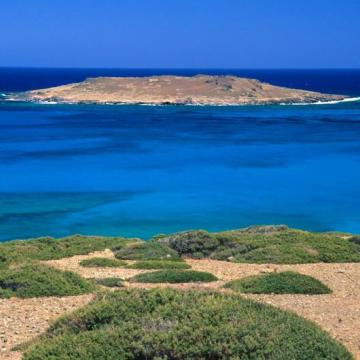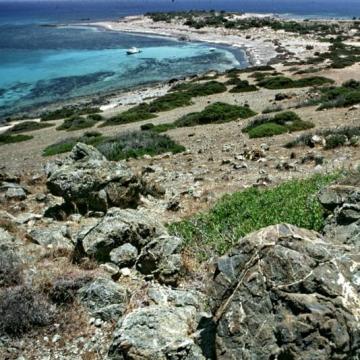GR4320003 - CHRYSI ISLAND
Map
Quality
Chrysi is one of the very few sites in Greece where the rare maquis with Juniperus oxycedrus ssp. macrocarpa is found on sand dunes. Also, the mixed forest of J. oxycedrus ssp. macrocarpa and J. phoenicea is not very common in Greece. The sandbeaches laid with small shells constitute one of its extraordinary features. Overall, it is a site with great aesthetic value being designated as special natural beauty site and encompassing a rare combination of ecosystems which form the habitats of several endemic species.OTHER IMPORTANT SPECIES WITH MOTIVATION DPlants: Silene ammophila ssp. ammophila is protected by the Greek Law (Presidential Decree 67/81) and included in the IUCN Red Data List (1993) in the category of threatened plants and in the European Red List of Globally threatened plants characterized as rare.Colchicum coustourieri is protected by the Bern Convention and by the Greek Law (Presidential Decree 67/81) and included in the IUCN Red Data List (1993) in the category of threatened plants and in the European Red List of Globally threatened plants characterized as vulnerable.Cynara cornigera is a species with distribution in S. Greece, the Aegean and Cyprus. Periploca angustifolia (=Periploca laevigata ssp. angustifolia) is found only on Chrysi and Gavdos in Greece; in Europe is is found also in Spain, Sicily and Malta, otherwise in N. Africa.Teucrium brevifolium is an S. Aegean species occuring in Anatolia, Egypt and Libya out of Greece.
Other characteristics
The island of Chrysi has shallow gulfs and sand beaches laid with shells. The characteristic vegetation of the sand dunes is the Juniperus oxycedrus ssp. macrocarpa arborescent matorral. A large part of the island is covered with J. oxycedrus maquis and with a mixed forest of J. oxycedrus ssp. macrocarpa and J. phoenicea. The island of Mikronisi is a rocky, over-grazed island.
Documentation
1) Database CORINE-MEDSPA (2.1., 2.2., 2.4., 4.2.)
2) University of Crete, Laboratory of Terrestrial Ecology. 1993. Prokatarktiki Meleti Diacheirisis tou Fysikou Perivallontos tis nisou Chrysis (Preliminary Study for the Management of the Natural Environment of Chrysi Island). Irakleio, p. 58. (3.1., 3.2.c., 3.2.d., 4.1., 4.2., 4.5., 6.1., 6.2.)
3) Ministry of Environment Physical Planning and Public Works. 1990. (Work Team: A. Legakis et al). Erevnitiko programma. Meleti ton akton tis kritis pou parousiazoun oikologikes diatarahes (Research Programme. Study of the coasts of Kriti that present ecological disturbances). Dept. of Biology. University of Crete, p. 228. (3.1., 4.2.)
4) E.C.E. 1991. European Red List of Globally Threatened Animals and Plants. New York, p. 154 (3.3.)
5) Georghiou K. 1995. Checklist of Endemic, Rare and Threatened Plants of Greece. Draft. University of Athens. (3.3, 3.4, 4.2) 6) Bergmeier A. & P. Dimopoulos. 2003. The vegetation of islets in the Aegean and the relation between the occurrence of islet specialists, island size and grazing. Phytocoenologia 33 (2-3):447-474.
Reference: Natura 2000 data form, database release 7 Feb 2014





